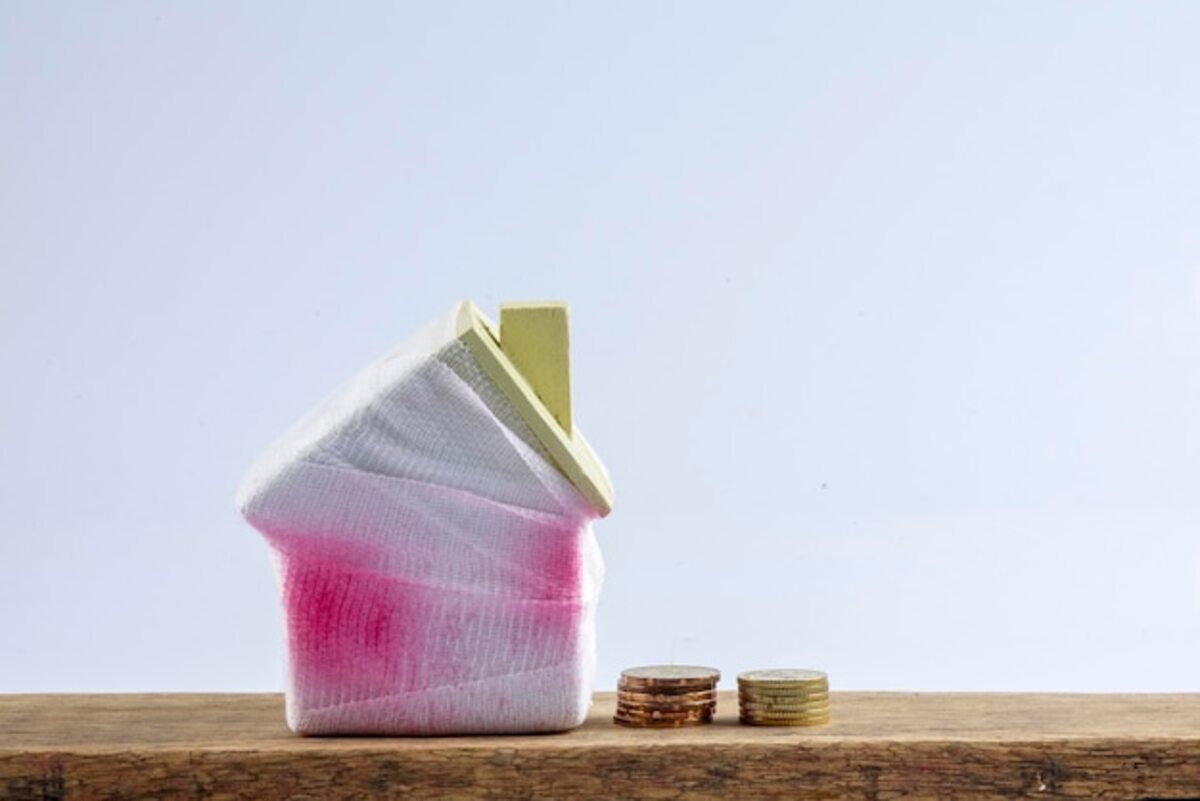Transform your home with a budget that enhances your goals.

Transforming your home doesn't have to be an unattainable dream. With a well-planned budget, you can enhance your goals and create the ideal space you've always desired. In this article, you will discover practical tips and financial strategies that will help you maximize every colón invested, ensuring that every corner of your house reflects your personality and lifestyle. It's time to make that transformation a reality without breaking the bank!
1. Setting your goals: What do you want to achieve with the transformation of your home?
Setting clear goals is the first fundamental step for any home transformation project. Before diving into the task of redecorating or renovating, take a moment to reflect on what you really want to achieve. Are you looking for a cozier and more functional space? Or perhaps you long for an aesthetic improvement that reflects your personal style? Defining your objectives will allow you to create a strategic approach that not only guides your decisions but also helps you prioritize the areas that need urgent attention, all within the framework of your budget.
By setting specific goals, you will be able to measure your progress over time. This will not only keep you motivated during the transformation process but also allow you to adjust your plans as needed. Ask yourself: what changes will be most beneficial for you and your family? Consider aspects such as comfort, functionality, and aesthetics, as each will contribute to creating an environment that truly feels like home.
Finally, remember that each goal must be realistic and achievable. While it's exciting to dream big, the objectives should be tailored to your financial resources and the time available for the renovation. Proper planning from the start will not only avoid future frustrations but also ensure that every investment made is aligned with your personal desires and needs. With a clear vision and a well-laid plan, transforming your home will become a rewarding and satisfying experience.
2. Effective budget: How to define and adjust your spending limit.
Defining an effective budget is the first step to ensuring that the transformation of your home is both exciting and financially viable. Start by taking a complete inventory of your current income and expenses. This will give you a clear view of how much money you can allocate to the renovation without compromising your basic needs. When setting a spending limit, make sure to include all possible associated costs, from materials and labor to unforeseen expenses that may arise during the project. Having a maximum amount in mind will not only help you stay focused, but it will also prevent you from feeling overwhelmed by impulsive decisions.
Once you have defined your initial budget, it is essential to adjust it as you progress in your project. Flexibility is key; while it is important to stick to the original plan, you should also be prepared to adapt your expectations according to the circumstances. For example, if you find an attractive deal on materials or decide to prioritize certain areas of your home over others, do not hesitate to adjust your spending limit to maximize the value obtained. Keep a detailed record of each expense and periodically review your progress; this will not only keep you within budget but also give you the satisfaction of seeing how each investment contributes to achieving the dream home.
3. Prioritize key areas: Where to focus your efforts for the greatest impact.
When approaching the transformation of your home, it is essential to identify and prioritize the key areas that will have the greatest impact on your space. Start by evaluating which rooms are the most used and which best reflect your personal style. For example, the kitchen and the living room are often the heart of the home, where we spend time with family and entertain guests. Investing in small yet significant updates, such as a new paint job or decorative accessories, can revitalize these spaces without the need for a complete remodel. Focus on elements that provide an immediate visual change and also improve functionality.
In addition to common areas, do not underestimate the importance of details in less frequented areas such as hallways or bathrooms. Often, small improvements like new faucets, stylish mirrors, or proper lighting can completely transform the daily user experience. Prioritize these areas based on their visibility and use: if a bathroom urgently needs an update, that could have a significant impact on both your well-being and the overall value of your home. At the end of the day, it’s about creating a balance between aesthetics and functionality that allows you to enjoy every corner without exceeding your budget.
4. Accessible materials: Affordable options that do not compromise quality.
When it comes to transforming your home, the choice of materials is fundamental to achieving an attractive and functional environment without spending a fortune. There are affordable options that are not only budget-friendly but also offer durability and aesthetics. For example, plywood is an economical alternative to solid wood, ideal for furniture or paneling. Additionally, ceramic tiles that mimic wood can add warmth and style to your floors without the high cost of natural material. Researching local suppliers or discount stores can give you access to quality materials that fit your budget.
Another excellent option is economical yet durable textiles. Choosing curtains, pillows, or rugs made from synthetic fibers can be much more affordable than their natural counterparts, without sacrificing appearance. Additionally, paints and finishes in neutral tones can refresh any space and create a cozy atmosphere; selecting products in large formats or on promotions can help you save even more. Remember that creativity plays a key role: reusing existing materials or seeking inspiration in DIY can lead you to transform your home with a unique and personal approach, all within a controlled budget.
5. DIY Projects: Creative ideas to make yourself and save money.
DIY projects are an excellent way to add a personal touch to your home without spending a fortune. With a little creativity and the right tools, you can transform everyday objects into unique pieces that reflect your style. From restoring vintage furniture to creating wall decorations, the possibilities are endless. There are countless online tutorials that will guide you step by step through each project, allowing you to learn new skills while saving money. Additionally, by reusing materials or recycling things you no longer use, you will be contributing to environmental care.
By embarking on these DIY projects, you can also involve the whole family, turning the process into a fun and enriching activity. Imagine spending an afternoon painting an old piece of furniture together or creating your own lamps with recycled materials; you will not only strengthen family bonds, but also create unforgettable memories while transforming your home. Moreover, these activities encourage innovation and problem-solving, valuable qualities that you can apply in other areas of your life. So don’t hesitate to explore those creative ideas and unleash your imagination: your home will become an authentic reflection of yourself!
6. The importance of functional design: Spaces that optimize your daily life.
Functional design is a fundamental pillar in the transformation of any home, as it focuses on creating spaces that are not only aesthetically pleasing but also practical and efficient. By optimizing the arrangement of furniture and choosing elements that facilitate daily activities, you can significantly improve your quality of life. For example, in a well-designed kitchen, every utensil should have its appropriate place and be accessible, allowing you to cook more smoothly and enjoy the process. Additionally, incorporating smart storage solutions can free up space and reduce clutter, contributing to a more relaxing and organized environment.
Additionally, functional design extends beyond simple physical organization; it also encompasses proper lighting, the choice of colors and materials that promote emotional well-being. A naturally lit living room can work wonders for your mood, while a bedroom designed to maximize comfort can significantly improve sleep quality. Investing in these aspects will help create a home where each area fosters your daily routines and supports your personal goals. With small strategic changes and careful planning within your budget, you can transform your home into a refuge that truly enhances your daily life.
7. Local resources in Costa Rica: Affordable stores and suppliers.
When looking to transform your home in Costa Rica, one of the best strategies to stay within budget is to take advantage of local resources. In every region of the country, you will find stores that offer unique and affordable products, from furniture to decor and construction materials. Stores like "La Casa del Artesano" or "Muebles el Rey" are perfect examples where you can find handcrafted pieces that not only beautify your space but also support the local economy. Additionally, many of these stores often have special promotions or discounts for larger purchases, which can help you maximize your investment.
Another valuable option is local markets and artisan fairs, where you can find handmade items at competitive prices. Not only do you have the opportunity to acquire unique products for your home, but you are also contributing to the sustainable development of the community. Suppliers that specialize in recycled or reused materials are another excellent alternative; these resources are not only more economical but also promote a more eco-friendly lifestyle. So don't hesitate to explore the options available in your area; many times the best transformation comes from what is local and accessible.
8. Smart financing: Options to improve your home without financial stress.
Smart financing is key to carrying out the transformation of your home without financial stress overwhelming you. One of the most popular options is the use of personal loans specifically for home improvements, which often offer competitive interest rates. Additionally, many financial institutions have programs designed exclusively for renovation projects, allowing you to access funds under favorable conditions. Before making a decision, make sure to compare different offers and choose the one that best fits your financial situation and specific needs.
Another interesting alternative is home improvement lines of credit, which allow you to access funds when you need them, providing you with flexibility in managing your expenses. This type of financing gives you the opportunity to make several small improvements instead of one large and costly project. You can also consider other strategies such as saving a specific percentage each month or using tax incentives available for making sustainable or energy-efficient renovations. Remember that every small investment counts, and choosing the right approach will enable you to achieve that desired transformation without compromising your economic stability.
9. Long-term maintenance: How to care for your investments to avoid future costs.
Long-term maintenance is essential to preserve the quality and value of your home investments. After making improvements or renovations, it's important to establish a regular maintenance plan that includes periodic inspections, cleaning, and necessary repairs. For example, checking the plumbing system, ensuring that appliances are in optimal condition, and maintaining outdoor spaces can prevent larger and more costly problems in the future. By dedicating time and resources to this aspect, you not only protect your initial investment but also ensure a safe and healthy environment for you and your family.
Also, consider making small updates or aesthetic changes that can revitalize your spaces without requiring a large investment. Painting the walls or replacing old fixtures with more modern ones are simple actions that can have a significant visual impact. It is also helpful to educate yourself about the materials used in your projects to choose those that require less maintenance in the long term. Ultimately, taking care of your investments not only translates into economic savings but also into enjoying a cozy and functional home for many years.
10. Visual inspiration: Finding ideas in social media and specialized magazines.
The search for visual inspiration is a fundamental step in the process of transforming your home. Social media and specialized magazines are endless sources of ideas that can help you visualize how you want each room to look. Platforms like Pinterest and Instagram allow you to explore thousands of styles, from the most minimalistic to the most extravagant, making it easy to create a personalized inspiration board. By following decorators, designers, and home enthusiasts, you can discover new trends and creative solutions that fit your budget and specific needs.
Moreover, specialized magazines offer curated content with high-quality photographs and practical tips that can be very useful when planning your renovation. They often include sections with "do it yourself" projects that stimulate creativity and show how small changes can have a big impact without the need to spend a fortune. Taking the time to explore these platforms will not only enrich your vision of interior design but also provide you with valuable tools to implement your ideas within the financial framework you have established. Ultimately, the goal is to achieve a space that is not only functional but also reflects who you truly are.



